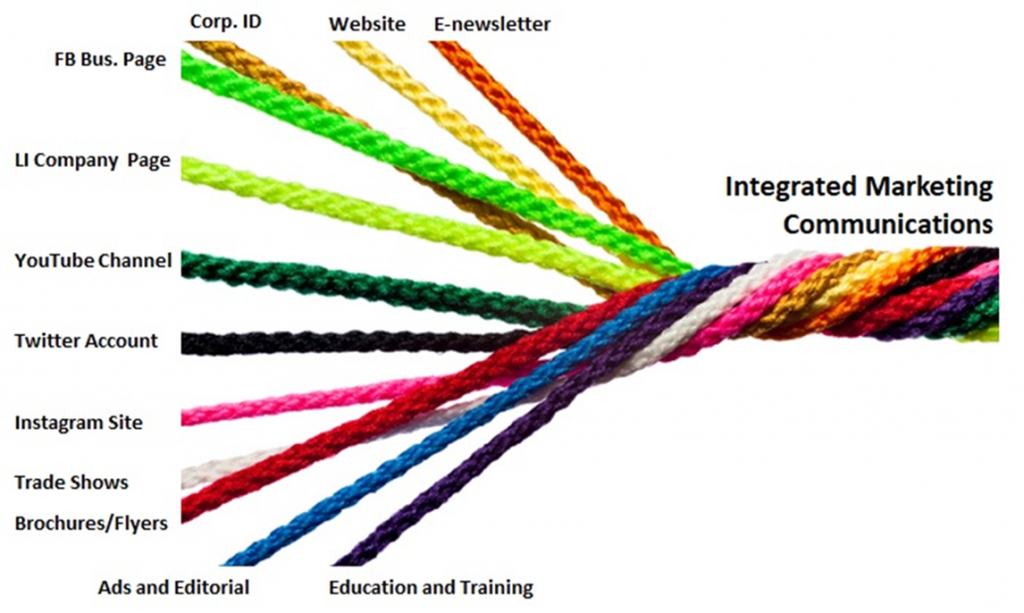Business owners should be focused on building and maintaining customer loyalty, while turning prospects into customers. Integrated marketing communications (IMC) merges digital and traditional advertising, public relations, direct marketing, social media, and sales promotion, into a cohesive customer loyalty strategy. This integration extends to engaging sight, sound, smell, taste, and touch. Various communication platforms like social media pages, e-newsletters, video channels, trade shows, digital and print materials, as well as educational techniques, contribute to this unified approach to marketing communications. Instead of treating each channel separately, IMC acknowledges their interdependence and interconnectedness. By harmonizing messaging and tactics, IMC ensures coherence, reinforces brand identity, and strengthens the narrative, whether it’s conveyed through audiovisual productions or written content.
To stand out from competitors and differing viewpoints, large organizations (in both private and public sectors) use integrated marketing communications to craft a compelling message. Micro enterprises can also make their messages resonate clearly using integrated marketing communications. When customers consistently encounter unified messaging across various touchpoints, brand awareness flourishes. Hence, small businesses must establish clear brand attributes and promises to customers before embarking on an IMC strategy. They must employ marketing tactics that reinforce the organization’s purpose, mission, and vision.
The 7Ps of the marketing mix should be aligned with the communication strategy and tactics. For instance, a brand’s social media presence should mirror its value proposition, product or service value to a customer, and perhaps pricing strategy. The storytelling approach should reflect how the organization cultivates and sustains customer experiences, the ease of purchasing or adopting a concept, the brand’s accessibility and reviews, and the ethical promotion of messages. In today’s marketplace, fraught with the tension between fiction and reality, these considerations are crucial.
An IMC strategy must target an audience that is attracted to the organization’s offerings and brand promise. Therefore, small enterprises should research the demographics of their existing customers and prospects, understand the general persona of their audience, and gauge their capacity for investment in the brand’s products, services, or ideals.
By embracing a strategic and integrated marketing communications approach, brands can effectively engage with their customers and prospects to build loyalty in a landscape saturated with distracting communication noise.

Grant Lee, CPM
Marketing Strategies and Tactics

